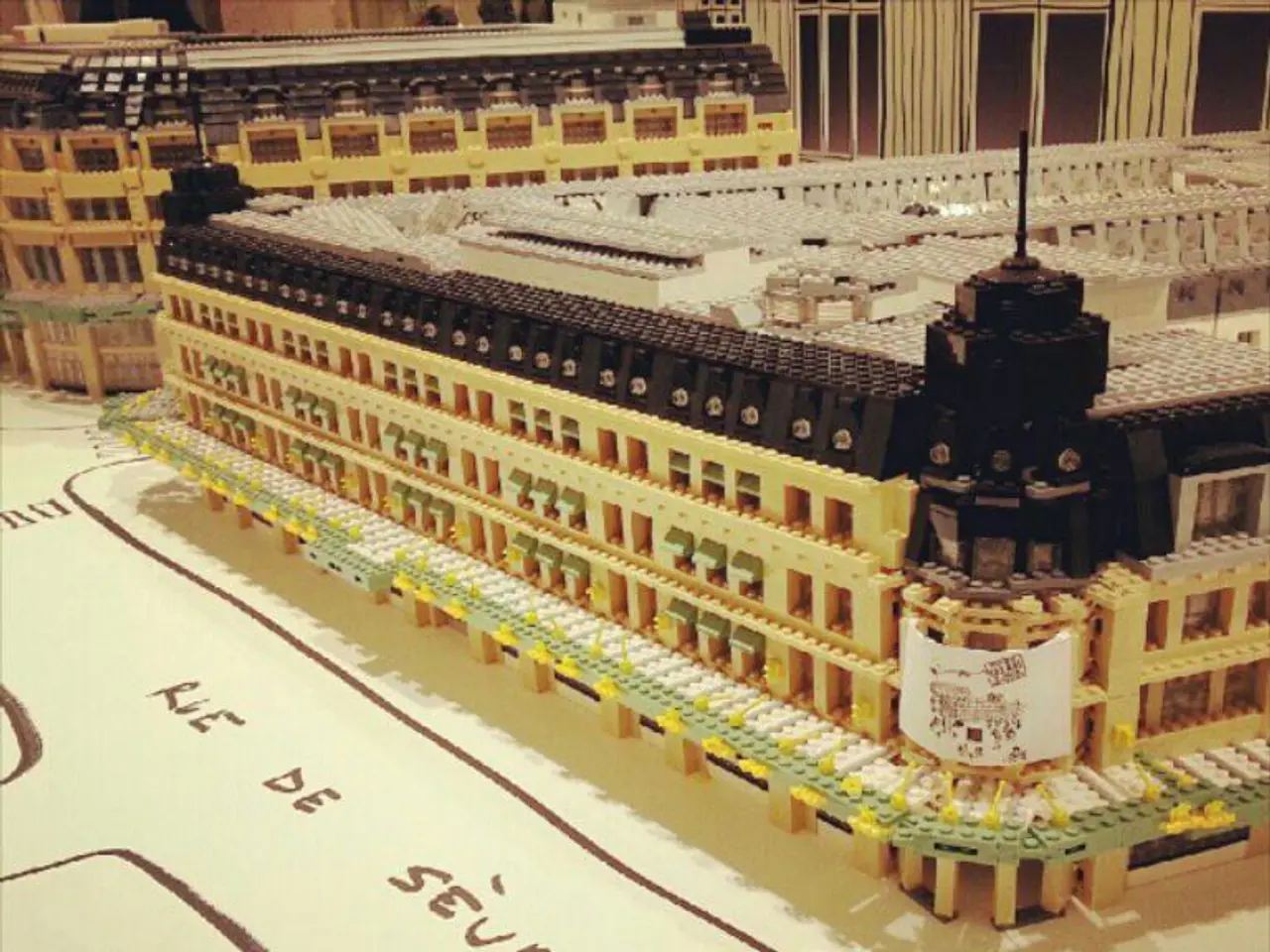Steps to Enter the Metaverse: A Comprehensive Walkthrough
The metaverse, a shared virtual world where users can interact with each other and digital content in real-time, is rapidly gaining momentum. This digital realm, built on a foundation of virtual reality (VR), augmented reality (AR), blockchain, 3D modeling, and immersive technologies, is transforming the way we play, learn, and do business.
To embark on this exciting journey, a few essentials are required. A stable internet connection is crucial for a smooth experience, and compatible software applications are necessary to join metaverse platforms. A crypto wallet becomes essential for buying and selling digital assets within the metaverse. High-end gaming laptops and desktops are recommended for the best experience, as processing power plays a significant role in performance.
The metaverse market is forecasted to grow massively, with digital asset marketplaces expected to become a $325 billion opportunity by 2030. The industrial metaverse alone could reach $600 billion by 2032, driven by enterprise adoption and new business models.
Technological enablers are driving this growth. Blockchain underpins secure, decentralized ownership of digital assets, crucial for digital marketplaces and economic models within the metaverse. Artificial Intelligence (AI) enhances interactivity by enabling personalized experiences, dynamic content creation, AI-driven avatars, conversational chatbots, and real-time environment optimization. 3D modeling and rendering create immersive, realistic virtual environments and avatars, essential for engagement. Cloud Computing and Networking (5G) provide scalable infrastructure and low-latency connectivity necessary for smooth multi-user interactions. Haptic Feedback Technologies and emerging Brain-Computer Interfaces (BCIs) aim to deepen immersion by simulating touch and enabling direct neural connections to the metaverse.
Hardware trends reflect this growth. Extended Reality (XR) devices, encompassing VR, AR, and MR, are evolving toward more immersive, versatile, and consumer-friendly form factors. The maturation of Android XR platforms promises to broaden device ecosystems beyond Meta’s offerings by fostering more vendor participation and smartphone-style adoption patterns.
In the software and platforms realm, social metaverse platforms like Horizon Worlds, Decentraland, and VRChat continue to advance, integrating AI to deepen social interaction quality and user engagement. Enterprise metaverse applications are expanding to include remote collaboration, training, marketing, and operations management, significantly disrupting traditional workflows with immersive experiences. AI-driven content generation tools facilitate user creativity in building virtual environments and objects, reducing technical entry barriers.
The metaverse's influence is reaching far beyond gaming and entertainment into enterprise sectors like manufacturing, real estate, healthcare, and retail, where immersive technologies enable new efficiencies and customer experiences. The integration of AI, XR hardware, and blockchain is fostering ecosystems that combine social interaction, commerce, and productivity at an unprecedented scale.
To join the metaverse, users will need a device capable of accessing it, such as a computer, smartphone, or virtual reality headset. Hand-operated controllers come with VR headsets and help in navigating through the virtual world. Education and collaboration are opportunities in the metaverse, with virtual classes, workshops, and conferences available.
Virtual real estate is a growing industry in the metaverse economy, involving buying and selling virtual land, buildings, and other structures. Users can log in to a metaverse platform and create their own avatar, which can be customized to look like the user or anything else they desire. There are various metaverse platforms available, each with its own unique features and offerings.
The concept of the Metaverse dates back to the 1992 novel Snow Crash by Neal Stephenson. Social media platforms are a great way to connect with people who share similar interests in the metaverse. Understanding cryptocurrency, digital assets, and virtual real estate is necessary for participating in the metaverse economy. Joining the metaverse involves several steps, including selecting a platform, creating an account, acquiring necessary hardware, installing software or apps, customizing the avatar, setting up payment methods, exploring the environment, participating in activities, networking and socializing, and staying informed.
Augmented Reality (AR) glasses can be used to overlay digital objects onto the real world, offering a unique blend of the physical and virtual worlds. As the metaverse continues to evolve, it promises to redefine how we interact, work, and play in the digital realm.
[1] Diginomica (2022). The Metaverse: A $325 billion opportunity by 2030. Retrieved from https://diginomica.com/2022/01/24/the-metaverse-a-325-billion-opportunity-by-2030/
[2] Deloitte (2021). The metaverse: A new frontier for social, commerce, and work. Retrieved from https://www2.deloitte.com/content/dam/Deloitte/us/Documents/about-deloitte/us-consulting/the-metaverse-a-new-frontier-for-social-commerce-and-work.pdf
[3] TechCrunch (2022). The Metaverse market is projected to grow by 87% in 2026. Retrieved from https://techcrunch.com/2022/02/11/the-metaverse-market-is-projected-to-grow-by-87-in-2026/
[4] McKinsey & Company (2021). The Metaverse: A new frontier for enterprises. Retrieved from https://www.mckinsey.com/business-functions/mckinsey-digital/our-insights/the-metaverse-a-new-frontier-for-enterprises
To delve deeper into the metaverse, having the right technology is essential. A quality version of gadgets such as virtual reality headsets, powerful gaming laptops, and AR glasses is necessary to experience this immersive digital realm effectively. Moreover, the ever-growing metaverse economy relies on technology such as blockchain, AI, and 3D modeling to facilitate secure transactions, personalized experiences, and realistic virtual environments.



